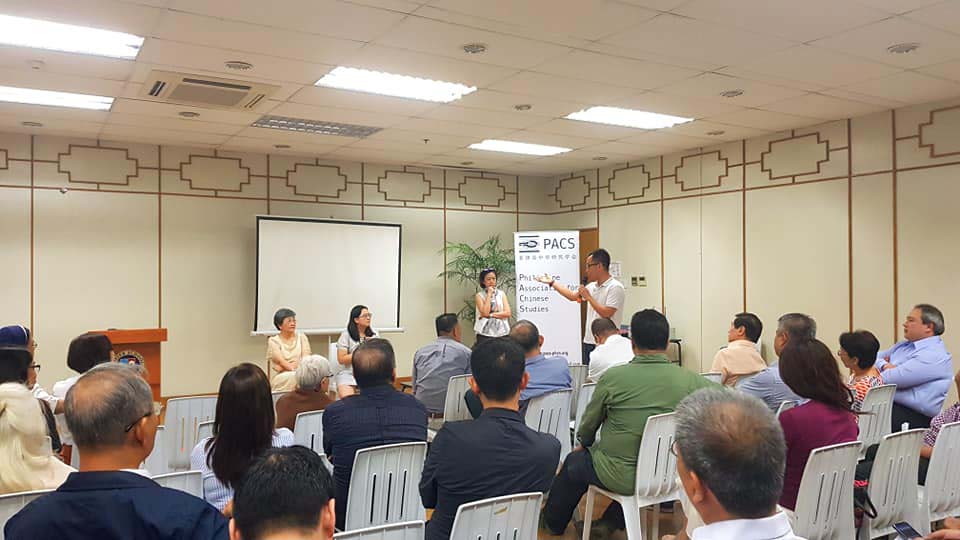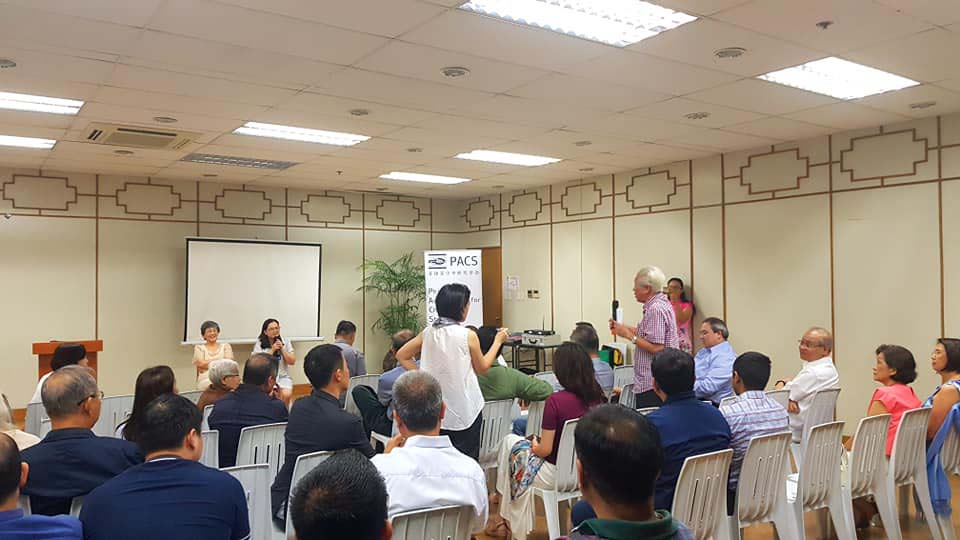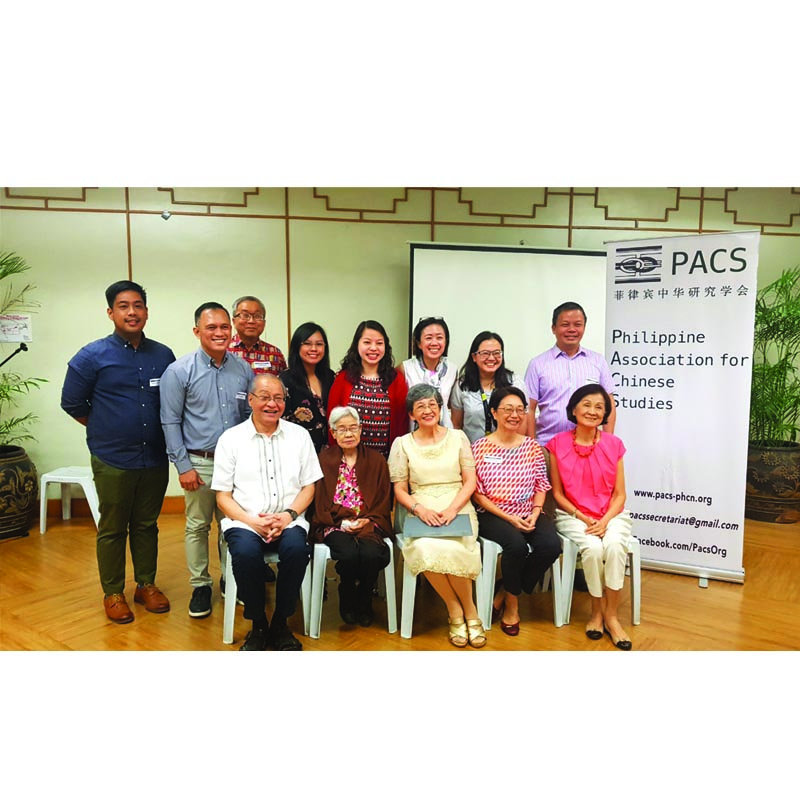
For several generations, general understanding on precolonial Philippines has always been viewed from the perspectives of scholars, chroniclers, and historians of its erstwhile colonial masters: Spain and the United States.
Recent scholarly studies on ancient Chinese sources and new discoveries of accounts on China by Spanish priests reveal new and alternative insights on the Philippines and its precolonial history. These new findings can also provide interesting narratives on the history and current state of Philippines-China relations.
These recent scholarly studies were highlights of two excellent lectures that launched the Carlos Chan Lecture Series on Philippines-China Relations by the Philippine Association for Chinese Studies (PACS).
PACS launched the lecture series on Feb. 9 at Xavier School in Greenhills, San Juan City in honor of Carlos Chan, chairman emeritus of Liwayway Marketing Corp. and the Philippines’ special envoy to China.
The launching coincided with PACS’ annual celebration of Spring Festival and general assembly attended by its members and past presidents, including Ambassador Chito Santa Romana.
The launch featured lectures of Carmelea Ang See, who discussed her research entitled, “Song, Ming and other Chinese Sources on Philippines-China Relations,” and Teresita Ang See, who talked about “Shared History, Shared Heritage, Shared Destiny: Discovering New Narratives on Philippines-China Relations.”

Carmelea, the current president of Kaisa Para Sa Kaunlaran, aptly identified three major Chinese historical sources on the Philippines that have huge implications for the contemporary study of Philippines-China relations: 1) ancient Chinese maps, 2) culture and literature expressed through cultural practices and traditions and seen through stories, poems, and drama; and, 3) imperial records and dynastic annals.
Some ancient Chinese maps, particularly those produced during the 16th and 17th centuries, included many Philippines islands, especially from Luzon and Mindanao.
These maps indicate robust interactions between Chinese and Filipinos that have not been fully disseminated to the academic community and even to the wider public both in the Philippines and in China.
Carmelea examined specifically the 16th century Selden Map, which indicated the “depth and breadth of relations between the Chinese and early Filipinos” during pre-Hispanic Philippines.
She argued that ancient Chinese records about the Philippines “give us new knowledge, valuable information and significant developments hitherto unknown to the general public.”
She further stressed that aside from maps, some Chinese dynastic annals, travel accounts, and customs records included many discussions and references to some provinces of Luzon, Visayas, and Mindanao, particularly Mindoro, Pangasinan, Cebu, Butuan, and Sulu, among others.

Official records from Song and Yuan dynasties produced 12 books that mentioned the Philippines. Ming Dynasty produced 39 books describing Luzon and Sulu and their surrounding areas.
The Qing Dynasty, on the other hand, had 58 books citing Luzon and Sulu and their surrounding areas. Examining all these books from different Chinese dynasties can give current scholars new insights into and understanding of the history, evolution and recent developments in Philippines-China relations.
These sources can also provide more information on the interesting lives of Filipinos and their interactions with Chinese people during those periods.
Carmelea, who also teaches at De La Salle University, gave special emphasis on Sulu’s “unique role” in Philippine history based on ancient Chinese records. She noted that the Sulu Sultanate had the longest tributary relationship with China, having sent 16 missions to the Chinese emperor spanning two dynasties from Ming in 1417 to Qing in 1763 covering 346 years.
This long history of tributary relations can enrich present understanding on the history of Mindanao within the larger history of the Philippines and its relations with China.
She concluded her lecture by underscoring, “We learn from the past to guide our future. We are reminded that we have had thousands of years of good relations and it is upon us to maintain that. Like the past, people to people exchanges result in better understanding.”
In the second lecture, Teresita, who served as PACS president and founding president of Kaisa, disclosed new scholarly findings on the long evolution of Philippines-China relations based on current studies on pre-Hispanic Philippines, particularly accounts written by Fr. Martin de Rada and Fr. Miguel de Benavides, among others.
For a long time, understanding of Philippine history was based largely on historical accounts of Emma Helen Blair and James Alexander Robertson in their 56-volume studies The Philippine Islands, 1493-1898. These volumes became authorities on Philippine history and served as major sources of information about the Philippines during the pre-Hispanic and Hispanic periods.
But recent findings and studies from Chinese sources, and even Spanish sources on China, provide new and exciting narratives on the history of the Philippines and Philippines-China relations. These new narratives have strongly demonstrated the shared history, heritage and destiny between the Philippines and China.
Teresita, who was also past president of the International Society for the Study of Chinese Overseas, discussed the relations between Beijing and the Balangiga bells.
She related that the American forces that suppressed the Boxer Rebellion in China in 1900 and that massacred the Balangigans of Samar in 1901 were the same unit: the 9th Infantry Division of the United States Company C.
After their missions in China, the 9th Infantry Division returned to the Philippines to commit the same atrocities against the Samareños. When the Balangigans learned of the American atrocities against their fellows, they developed an extreme hatred against American soldiers, leading to the Balangiga town uprising that killed nine officers and 50 enlisted men of the 9th Infantry Division.
The Americans retaliated in an incident now known as the Balangiga Massacre where American soldiers were ordered “to shoot, not to capture,” just “kill and burn” and turn Samar into “a howling wilderness.”
These common historical experiences of sufferings and tragedies from American forces are ties that bind the Chinese and Filipinos.
Aside from the Boxer Rebellion and the Balangiga Massacre, the Nanjing Massacre in China under the Japanese occupation also had a strong bearing on Filipinos.

Teresita discussed two Japanese soldiers, Toshiaki Mukai and Tsuyoshi Noda, who competed as to who killed the first 100 Chinese in Nanjing between December 1937 and January 1938. After the Nanjing Massacre, Mukai and Noda got their next assignment to the Philippines as part of the Japanese Imperial Forces. Both Mukai and Noda were also involved in various atrocities in the Philippines during the Japanese colonial period until their eventual arrest in Leyte. Both soldiers were sent back, tried and executed in China after the Second World War.
This common historical experience provides the shared narratives of pain and survival between Chinese and Filipinos.
Philippine studies from Chinese sources and Chinese-Filipino narratives of the Philippines and China also offer unlimited insights on the history of the Philippines and the evolution of Philippines-China relations.
For example, the Libro Chino by Fan Li Ben was the first Chinese book ever translated into Spanish by the 16th century Dominican priest Father Juan Cobo, who was assigned to Manila’s parian.
Juan Gonzales Mendoza’s (1545-1618) History of the Chinese Empire published in 1585 used as resource materials the work of Domingo de Salazar and reports on the Sangleys as well as books brought by Padre Martin de Rada to Manila to complete his work. The book was translated into several languages in an unprecedented 46 editions.
During her presentation, Teresita also discussed the role of the Philippines in China’s global maritime trade and its impact on Western nations. She disclosed that Spain established a strong foothold in the Philippines in order to have a strong base to trade with China’s Fujian province.

She stressed, “Spain got its idea of being an imperial power from Fujian vis-à-vis Chinese traders in Luzon.” She even quoted Legaspi’s letter to the Spanish King stating, “If you want the sources of spices from Moluccas, then Cebu can become an important base and if His Excellency minds the China trade, then we have to choose Luzon as our base.”
In other words, Teresita underscored that new research findings about the Philippines and China offer a wealth of knowledge on how these two countries were inextricably linked in history, culture, and destiny. She concluded that the “blending of the cultures, the shared history and heritage are ties that bind, more solid than the issues that divide.”





